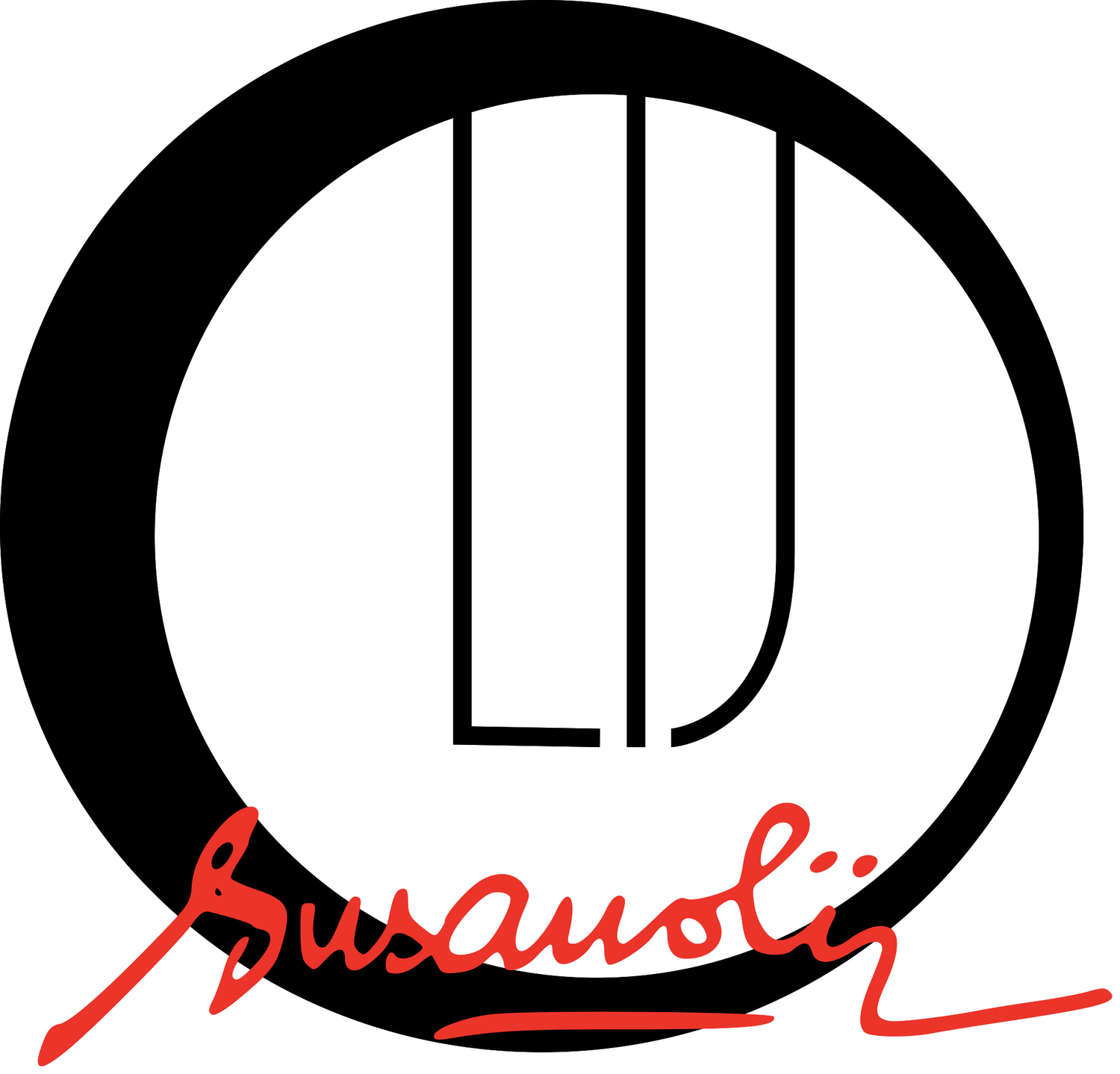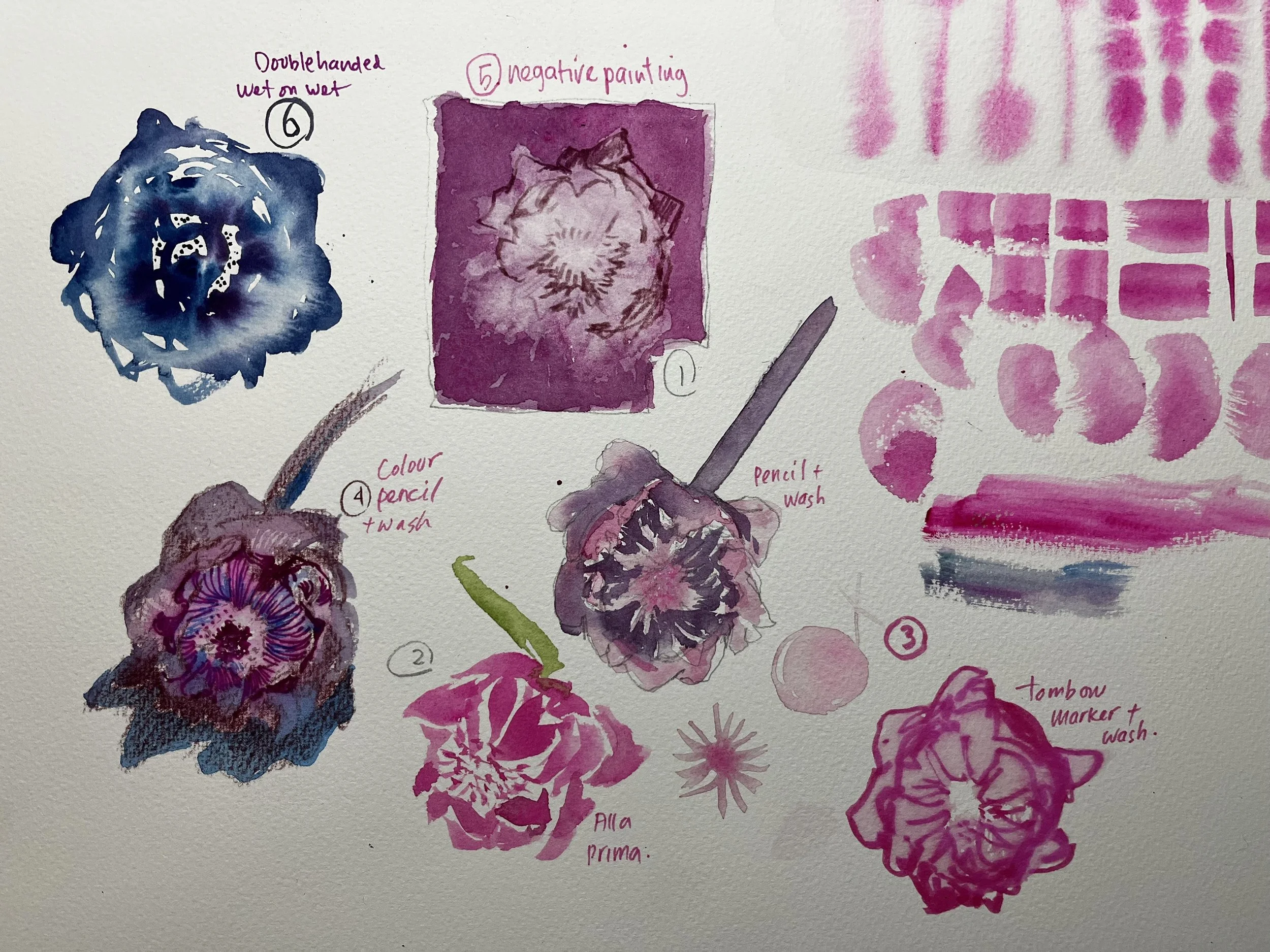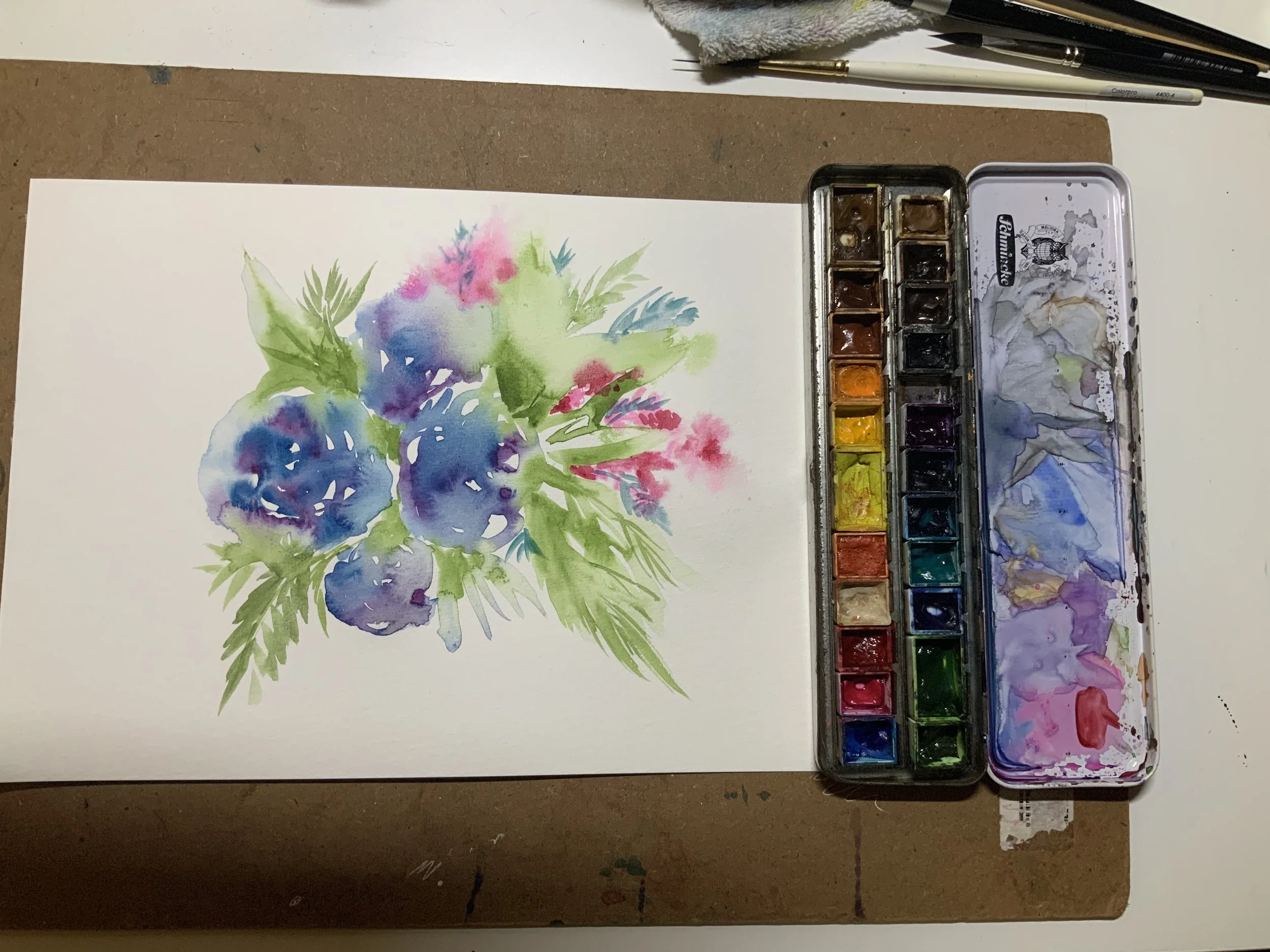The Imperfect Science of Watercolour
This is the article that supplements my Free Community Online Workshop I did on 7th of April 2023. Thanks to those who attended.
In this online workshop, I showed my wandering, experimenting and riffing techniques towards many different versions of painting lotus flowers and cherry blossoms. In the 90 minutes, many version that slides on the spectrum of realism to more abstract.
My one word motto is Imperfectionism
The workshop title says it all, but what does it really mean?
Hazel Soan’s quote started this whole thought process about watercolour.
She said "Painting is an art but what happens on the paper is science, and painting should never accept compromise.”
This is a quote in the context of using a limited palette, that means using only 2-3 colours to paint a whole picture. She argues that the less colours we use, the more colourful our painting is, which kinda doesn’t make sense at first, but after using a lot of watercolours, painting with muddy mix of colours and having pages of watercolour painting that feels flat, dirty, overworked because there’s too many layers that it looks more like a layer cake, the more what Hazel Soan’s saying make sense.
The cleaner your pigment use is, the fresher your painting with look. That includes less mixing on the palette, less moving the brush on the same spot. This can also be an argument for using paint from tubes versus paint cakes in a full or half pan that has been dried in advance. My one masterclass with the artist Zhu Hong still rings in my ear when he also insists to only use paint from tubes because its fresher and more vibrant .
It doesn’t mean you have to throw out your pans and start buying tubes, it just means that maybe you can see and feel the difference for yourself if you have both types of watercolour. It just means if you have only pans, that you can still use just 3 colours and see the colour of your water at the end of the painting, is it brown? Is it muddy like chocolate milk? Or is it kinda like watered down milo where you can still see through it.
These are the kinds of questions I love to ask when I am exploring watercolours.
The imperfect-ness of the science lies in the fact that no teacher or masterclass artist will be able to tell you exactly how much water they use to get the beautiful consistency showing up. You have to learn to trust your own gut instinct and intuition for the magic to happen. The intensity of the colour and the consistency of the paint as explain through tea, coffee and milk seem to be the one way that translates the painting knowledge for beginners, and the more we paint, the more irrelevant that knowledge becomes as we become better are judging our mix and trust that it’s not the end of the world if what we expect does not happen.
One of my student looked at me with disbelief and then rolls her eyes really hard one time when she asked how does she know if she has the right amount of water to paint? I said after a while you know by the weight of your brush if you have the right amount of water to paint. This may sound ridiculous at first but some of you who has been painting with watercolour for a while will agree that this is a practice of intuitive science. And since the word Intuitive means ‘how one feels to be right, without conscious reasoning’, it is trusting our ability to be instinctive.
OK, instruction noted and clear Susan! How does trusting my intuition help me paint with watercolour better then?
You may first check in on yourself.
Do I compare my knowledge with anyone else? If you do, it is time to try something new. I am inspired by (insert name of artist or friend), let me see how this works for me.
How do I validate my own efforts, no matter how uncomfortable it feels at first? Try this because nobody can validate your instinctive efforts but you. I am merely a cheerleader for you to validate yourself.
This page below shows the way I lay the first ‘clean’ water layer and then adding the ultramarine trips, translate to wetter, wider and then drier paint.
And the pink thumbnail below it shows me using a q-tip to lift the sakura blossoms off the page. Watercolour paint used was Permanent Alizarin Crimson, and a little Prussian Blue, with blue colour pencil for the branch.
Demo paper is Saunders Waterford Cold Press 100% Cotton
Supplied used : The paint colours are Opera Pink, Carbazole Violet and Prussian Blue. Pink Tombow marker, Burgundy pentel marker, Blackwing Pencil, Dark Red Faber Castell Polychromo pencil.
The magic of double handed wet on wet with a light touch. The paint is Prussian Blue
The light touch is another favorite way i let the water carry the paint on the paper and the imperfect science is in the way the paint moves when it hits water. This is awesome, vibrant, beautiful and sometimes very scary too.
Check out the unedited real time demonstration video of this florals in OStudio Artist Community FB group that I posted after the workshop ended. And yes to see it, you do have to be a member of the group.
Double handed painting with light touch as shown in that video is one I recommend trying. Try it on 100% cotton paper, and then on other Watercolour paper. The science part will show itself by how differently the paint reach the paper and it will be a wonderful experiment to watch as it happens.
And finally here’s a podcast hosted by artist Mike Hendley where Hazel Soan’s explained her method of working with limited palette watercolour with such great enthusiasm that will really inspire you. I was so pumped about trying out the limited palette homework using paints I already have.
And here’s the link to the page where all her books are listed including the new one “Art of the Limited Palette” talked about in the podcast!
Happy Painting and enjoy your April!






